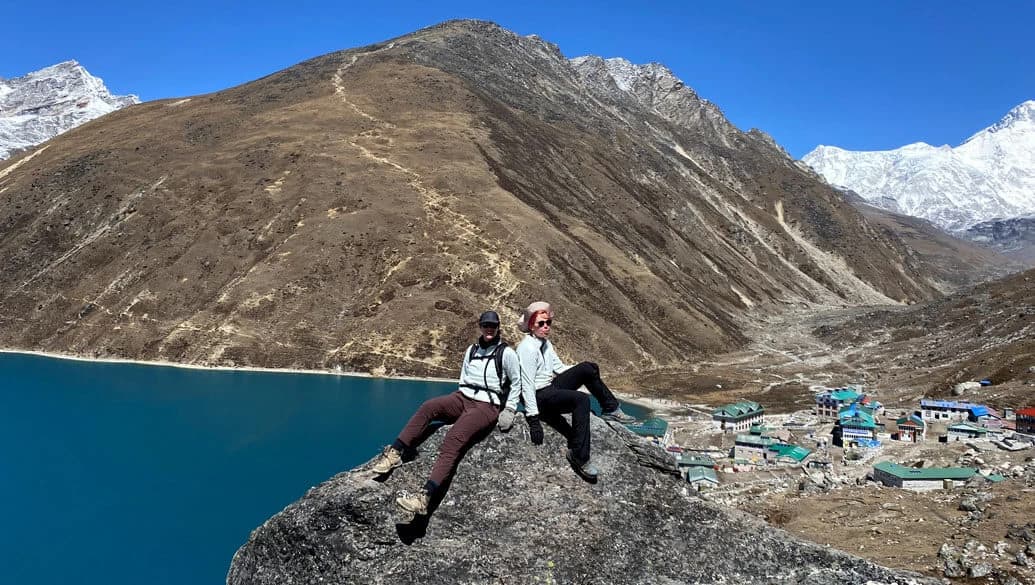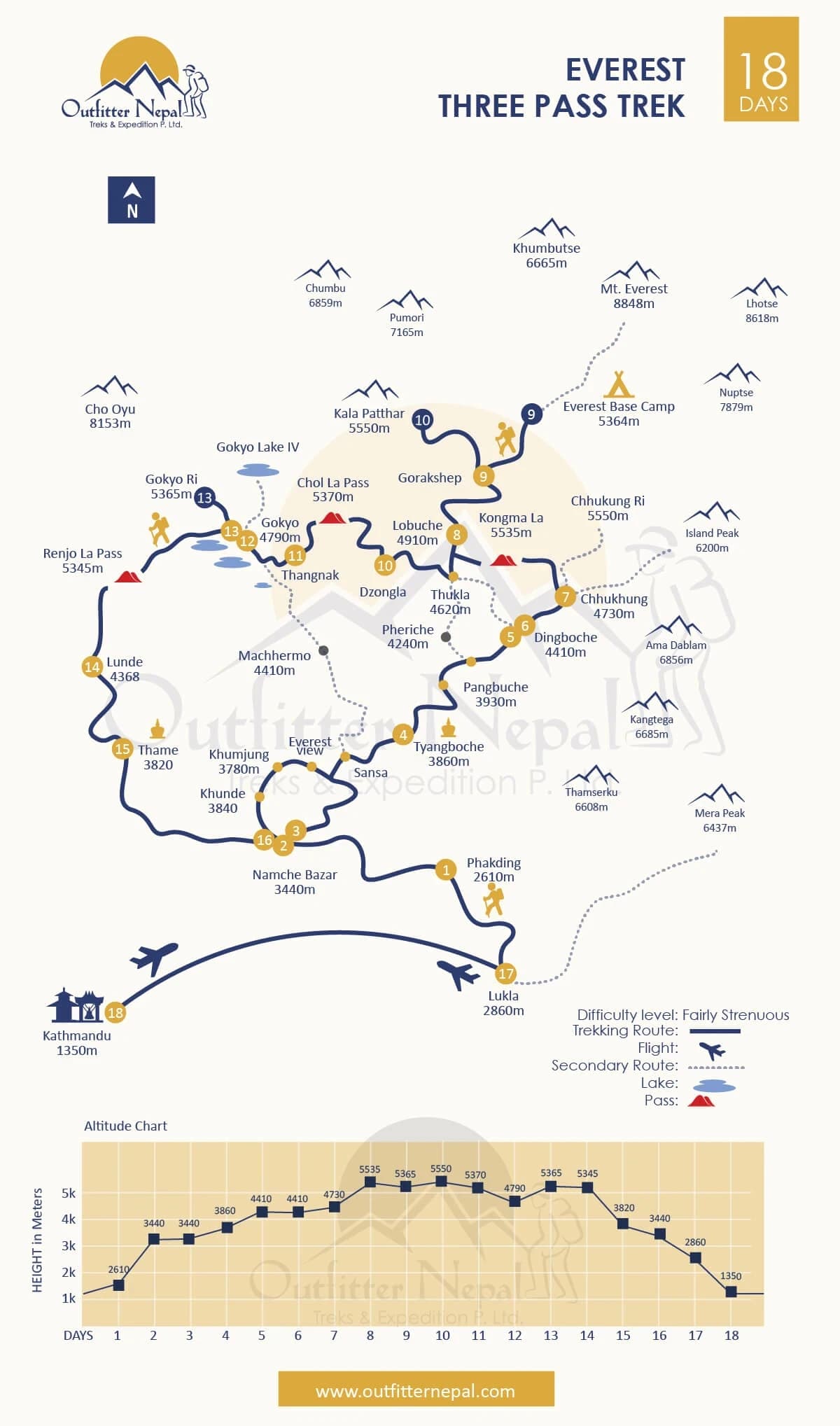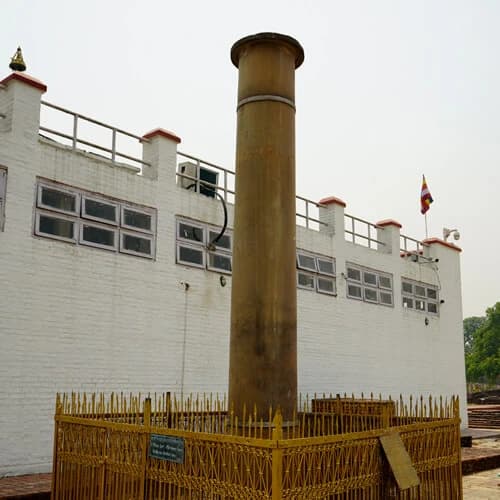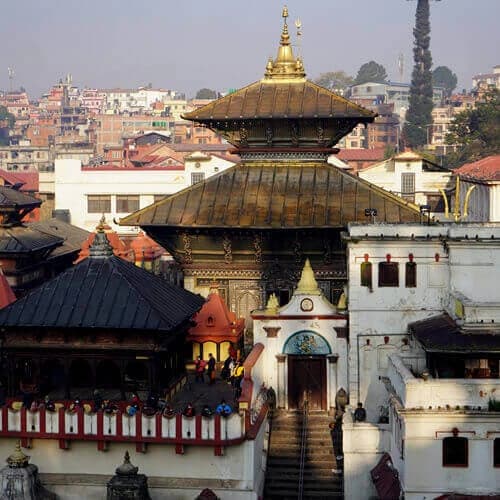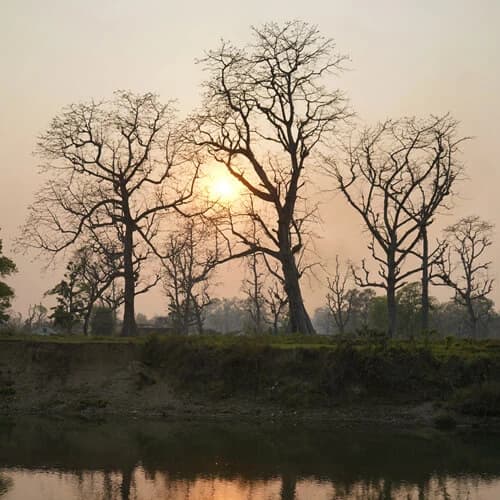Everest Three High Pass Trek Highlights
- Conquer three high-altitude mountain passes such as Renjo La (5,360m), Cho La (5,420m), and Kongma La (5,535m), each offering a distinct experience and spectacular views.
- Hike to famous viewpoints like Kala Patthar (5,550m) and Gokyo Ri (5,360m) for panoramic views of Everest, Lhotse, Nuptse, and other mountain peaks.
- Visit the world-famous Everest Base Camp, the starting point for expeditions to the summit of Mount Everest.
- Discover the serene, turquoise glacial lakes in the Gokyo Valley, and immerse yourself in its serenity and spiritual ambiance.
- Traverse across major glaciers in the region, such as the Khumbu Glacier and Ngozumpa Glacier.
- Experience the rich Sherpa culture by trekking through traditional villages like Namche Bazaar and visiting ancient monasteries, including Tengboche Monastery.
- A relaxing walk through the Sagarmatha National Park, a UNESCO World Heritage Site, which is home to diverse flora, fauna, and some of the world's most impressive landscapes.
Overview of Everest Three Pass Trek 18 Days
The 18-Day Everest Three Pass Trek is a challenging and rewarding trek requiring basic climbing skills in the Everest region of Nepal. This Himalayan expedition combines the classic Everest Base Camp (5,364 m/17,598 ft) trail with three high passes, including Renjo La (5,360 m/17,585 ft), Cho La (5,420 m/17,782 ft), and Kongma La (5,550 m/18,209 ft). The thrilling journey is also a perfect opportunity to visit iconic landmarks, including Kala Patthar (5,643 m/18,514 ft), Gokyo Ri (5,357 m/17,575 ft), and the mesmerizing Gokyo Lakes (4,700 to 5,000 m/15,420 to 16,404 ft). Along the way, you will hike through the remote Nangpa La Valley, the charming Sherpa village of Marlung, and the serene town of Thame. This makes it a perfect blend of thrilling hikes through rhododendron forest, cultural immersion, and exploration of hidden gems in the Khumbu region.
The trek begins with a breathtaking 35-minute flight to the Tenzing-Hillary Airport, one of the most thrilling in the world. You will then hike to Phakding, follow the Dudh Koshi river, and make your way to Namche Bazaar for acclimatization. After spending a day adapting to the increased altitude and low oxygen level, to avoid the risk of acute mountain sickness or AMS. In the coming days, you will pass Sherpa villages including Tengboche, Dingboche, and Chhukung. From here, the trek gets more challenging as you will make your way to Kongma-La Pass, Lobuche, EBC, GorakShep, Kala Patthar, Dzongla, Cho La Pass, Thangnak, Gokyo, Lunde via Renjo La Pass, Lunde, and Thame. Finally, you will end the trek with a relaxing descent back to Namche and Lukla, experiencing a new perspective of the Everest region.
Trekking to the EBC and crossing the three passes is a high-altitude expedition for adventure enthusiasts seeking a new challenge. You have to commit and be prepared for this ambitious journey to the Himalayas. It is not recommended for beginners and is ideal for seasoned trekkers who have been exposed to high-altitude conditions for multiple days. In this journey, you will have to navigate snow moraines and ice walls, which requires basic climbing skills and equipment handling. Additionally, the entire trek will be led by our experienced Sherpa Guide, who is native to the Everest/Khumbu region and has trekked the trail dozens of times. They understand the challenges of the terrain and will monitor your well-being for any signs of altitude sickness.
Note: After your booking is confirmed, we'll arrange a personalized online trip briefing to make sure you feel fully prepared for the journey ahead. In this session, our team will guide you through the gear you'll need, explain the itinerary in detail, and give you a realistic sense of what life on the trail will be like. Once we receive your required documents, we'll send you a list of available dates and times so you can join the briefing at a time that suits you.
How Difficult is the Everest Three High Passes Trek?
The Everest Three Passes trek is regarded as a highly strenuous and challenging Himalayan expedition, designed for experienced trekkers with moderate physical stamina and mental resilience. As compared to the standard EBC trek, which follows well-trodden paths the Everest Three Passes trek traverses high-altitude glacial moraines and ice walls and requires basic climbing skills.
The difficulty of the Everest Three Pass trek is multifaceted and stems from a variety of factors such as long hiking hours, weather conditions, varied terrains, etc. During the journey, trekkers will encounter several technical challenges while crossing the passes. This includes navigating loose boulders, rocky paths, and glacial ice. For example, Cho Las Pass is noted as the most technical of the three passes, with sections of ice walls and cliffs.
Additionally, one of the primary and most challenging factors of the trek is the altitude. As travelers have to spend multiple days above 5,000m, you will have to get used to the atmospheric conditions. The air in the high-altitude region is thinner with less oxygen than at sea level. So, a proper acclimatization and gradual ascent are crucial to avoid the risk of altitude sickness. Apart from this, the remote trails, with limited medical facilities and infrastructures, also add to the demanding nature of the trek.
Is the Everest Three Pass Trek Suitable for Beginners?
The Everest Three Pass Trek is not recommended for beginners without high-altitude trekking experience. The Everest Base Camp Trek is considered moderately difficult and can be completed by beginner trekkers who are in good physical shape and prepare sufficiently. As previously stated in this post, the Three Passes trek is labeled as "strenuous" and "challenging". The trek is designed for adventurers who have acclimatized to high-altitude trekking in the Himalayas.
However, this does not mean the trek is impossible to complete for a beginner. With determination and excellent preparation, even someone without trek experience can take on the challenge. To give you an idea, the preparation includes basic climbing training and a pre-trek workout focused on strength, stamina, and cardiovascular fitness. Overall, while it is not supposed to be an introductory trek, it can be a realistic and rewarding trek experience for beginners who are committed to training and have the proper support and guidance.
Note: If you prefer slightly less demanding trails, the Everest Base Camp via Gokyo Lakes is a suitable option.
Why Everest Three High Passes Trek with Outfitter Nepal?
By choosing Outfitter Nepal for the Everest Three Pass Trek, you are not just booking a trip, but securing an authentic adventure led by the experts of the Himalayas. Our staff are equipped with first aid kits and oximeters to evaluate your condition, and will arrange helicopter evacuation (covered by your insurance) if a medical emergency were to arise. Their intimate knowledge of the trek route and deep understanding of the culture and heritage of the mountains ensure you have an authentic experience. Additionally, we are officially registered and affiliated with Nepal's Ministry of Tourism, Trekking Agencies' Association of Nepal (TAAN), Nepal Mountaineering Association (NMA), providing you with assurance that our trek and tour meet national standards of safety and quality.
Lukla Flight Information: During the busiest trekking seasons, spring (March, April, May) and autumn (September, October, November), Lukla flights are often redirected to depart from Ramechhap (Manthali) rather than Kathmandu's main domestic airport.
If this applies to your trip, your journey will start with an overnight drive of about five hours from Kathmandu, usually leaving around 1 a.m., to catch the morning flight from Ramechhap. Outside of these peak months, flights generally operate directly between Kathmandu and Lukla, making the transition to the mountains more straightforward.
